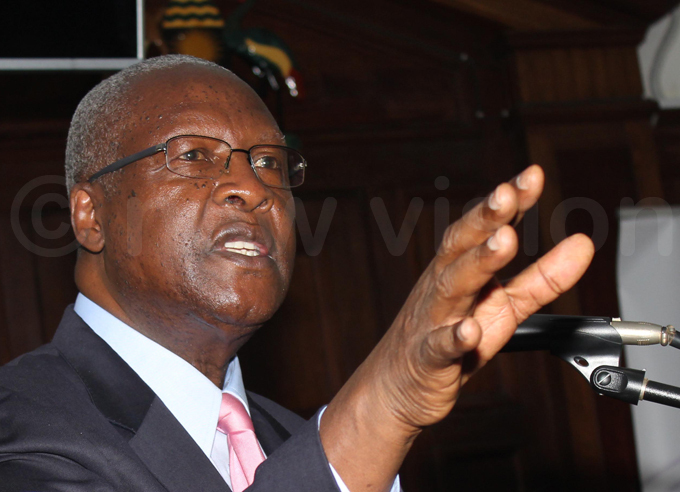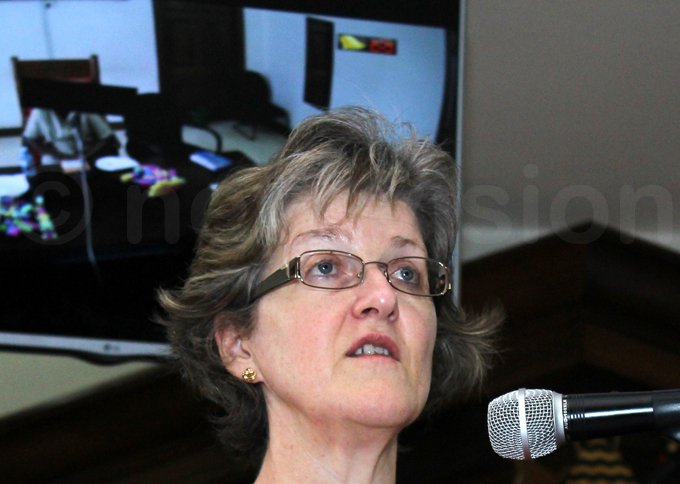16-year-old is first Ugandan to testify through video link
The system will protect victims of sexual and gender based violence from secondary victimization
A 16-year-old primary seven girl has become the first person to give evidence in court through a video link, following the launch of the audio-visual link for taking evidence in the courts of law.
The Juvenile was testifying in a case where a one Lameck Ogwal is accused of defiling her. The case is currently being handled by the Buganda road court grade one magistrate, Jameson Karemani.
In a mock demonstration on how the audio-visual technology works, the judges decided to have the girls' testimony taken from the High Court, Kampala.
In her testimony, the juvenile told court that in February 2015, Ogwal lured her to his home, forced her onto his bed and forcefully had sex with her.
She told court that on that fateful day she had gone to the well but when she found many people, she decided to go back home. However, midway the journey, she met Ogwal who persuaded her to go fetch water from his place.
"After filling my jerrycan, he pushed me into his house, then onto his bed and forced me to have sex with him," she said.
Unlike the normal courts where a victim stands in the witness dock before the judge and the court users, the juvenile testified in a secluded room with only two helpers and the testimony was relayed to the court where the judge, the defence lawyers and the prosecution was seated.
The state attorney, Emily Ninsiima handled the proceedings while in court but using the video link to guide the young girl through her testimony.
Audio-Visual link refers to giving or receiving of evidence through electronic means without a person physically appearing in court. It was launched today in the High Court by the Chief Justice Bart Katureebe.
According to the judicature Audio-Visual Rules No. 26 of 2016, a person can give evidence using this technology if proceedings relate to sexual or violent offences, when a witness lives outside Uganda and where it is inconvenient for one to give evidence in open court. One can also use the system for security, economic and health reasons.


Katureebe said that this system will protect victims of sexual and gender based violence from secondary victimization which they suffer when they physically appear in court to testify in the full view of their molesters.
He said that the system will also help in clearing the case backlog which is now standing at about 1,114 cases.
"You will all agree with me that the presence of too many pending cases is a shame to Judiciary and a serious affront to the rule of law, which should call upon all of us to work doubly hard to lay to rest this ulcer. This technology, if embraced maximally, will go a long way in mitigating the problem of case backlog," he said.
The technology is part of the Judiciary's five year ICT strategy which is expected to cost sh36b. It was funded by UNICEF and the government. Rwanda is currently the only East African country that uses the same technology in their criminal justice system.
Yorokamu Bamwine, the Principal Judge said that for long they have been shelving cases involving juveniles because they (the juveniles) were scared of appearing and testifying in an open court. Therefore, this system will help them to expeditiously handle such cases since they safety of the victims is assured.
He said that the system will first be used in the High court since it handles most of the juvenile cases and then later it will be rolled to the Gulu, Fort Portal, Soroti and Mbale high courts.
He said the system will also be extended to the major remand homes to prevent children from being transported to the courts of law to give evidence.
Various stakeholders welcomed the move stating that it will make it easier and comfortable for the children to give their side of story.